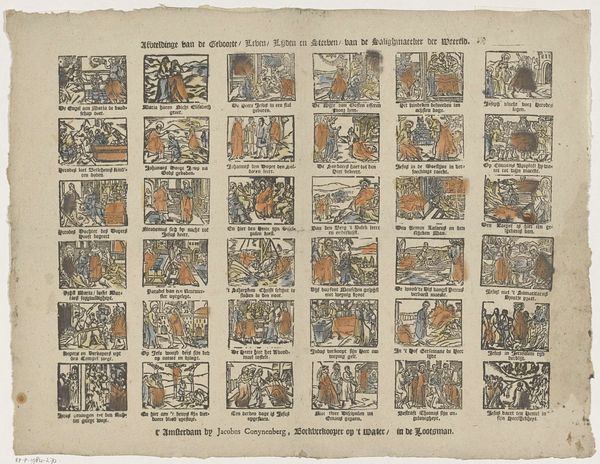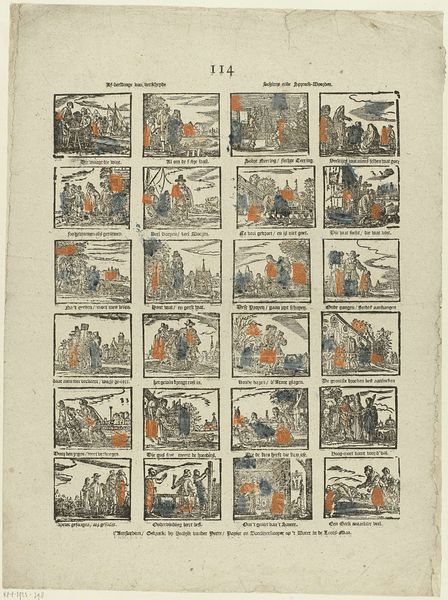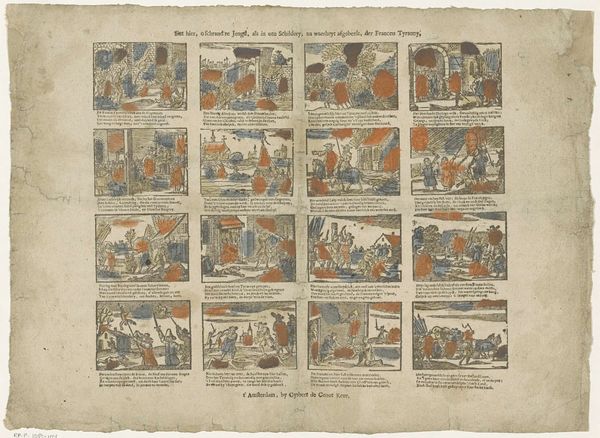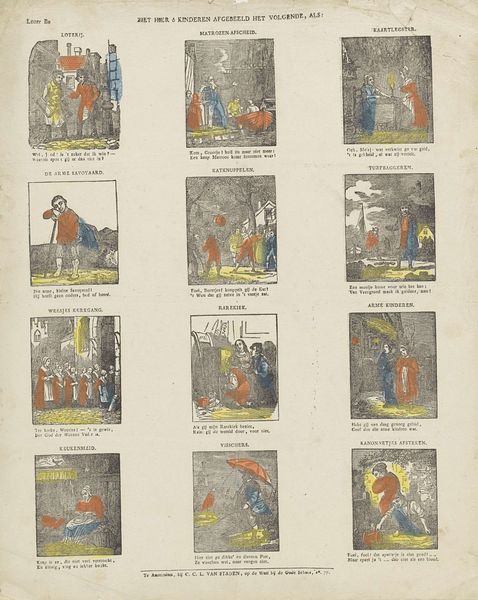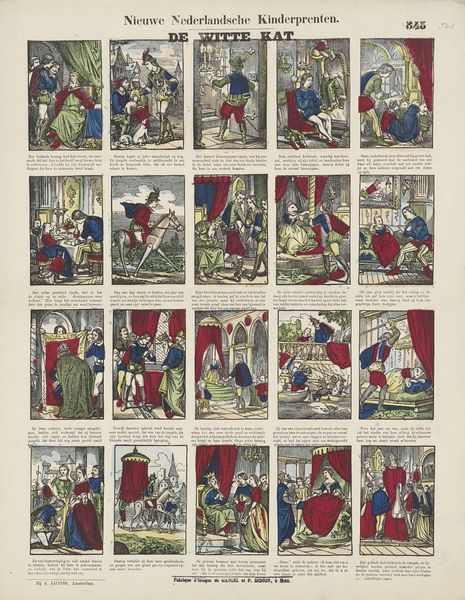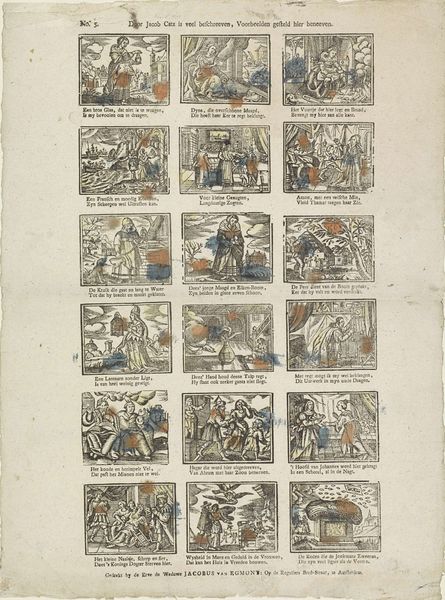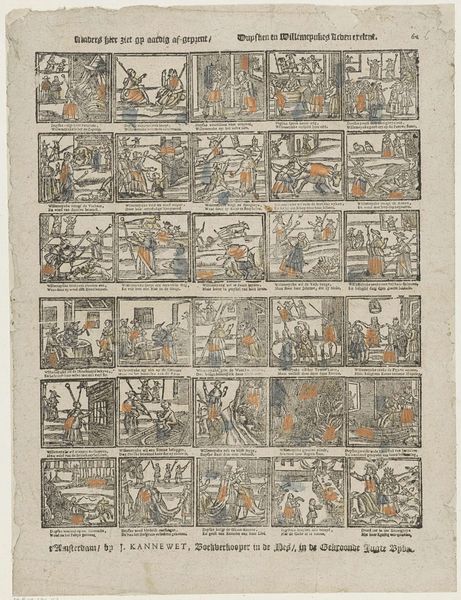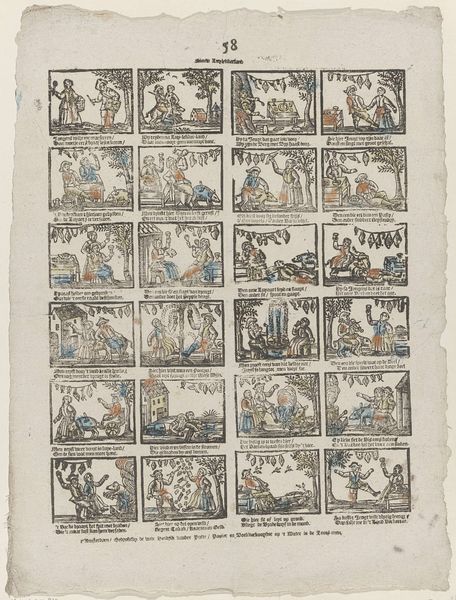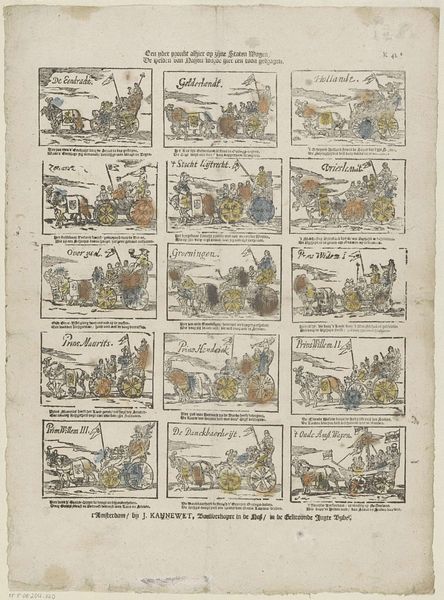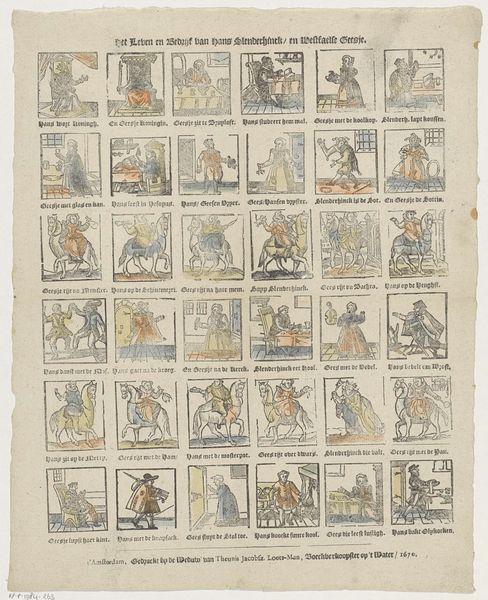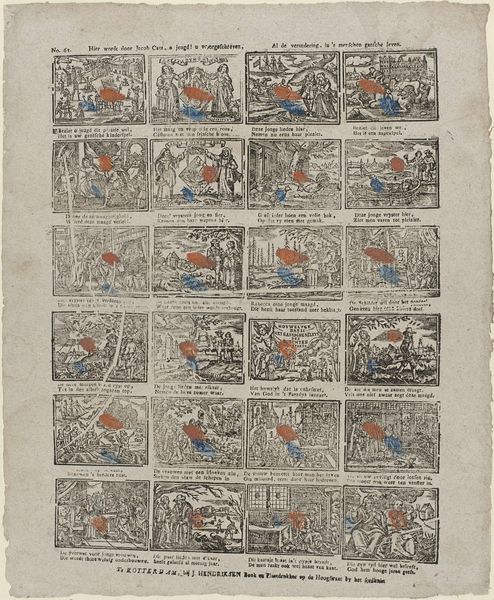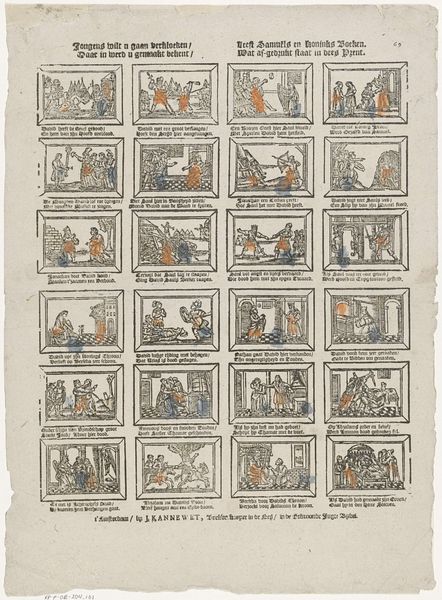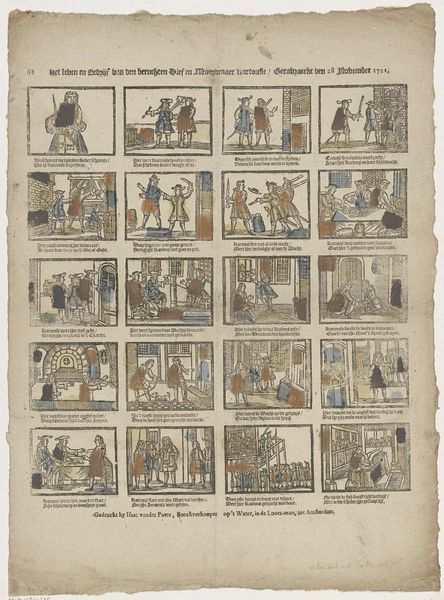
Schriftuurlijke figuren / uyt het begin tot het eynde van de handelingen der apostelen 1748 - 1761
0:00
0:00
graphic-art, print, engraving
#
graphic-art
#
aged paper
#
narrative-art
#
baroque
# print
#
old engraving style
#
sketch book
#
personal sketchbook
#
ink colored
#
pen and pencil
#
line
#
pen work
#
sketchbook drawing
#
history-painting
#
storyboard and sketchbook work
#
sketchbook art
#
engraving
Dimensions: height 422 mm, width 314 mm
Copyright: Rijks Museum: Open Domain
Editor: This is "Schriftuurlijke figuren / uyt het begin tot het eynde van de handelingen der apostelen," a print by Abraham van der Putte, dating from 1748-1761. The collection of small scenes, organized in a grid-like manner, seems like a storyboard of biblical events. How do you interpret this work from a formal perspective? Curator: Observe how the artist divides the visual field into a series of discrete units, each framed and containing a narrative moment. The linearity is striking. Consider the deployment of line – its quality, weight, and direction – which structures each composition. Are there discernible patterns or repetitions in the use of line and tone? Editor: I see a lot of repetition in the figures, particularly their poses. Also, there’s a consistent use of hatching to create shadows and define forms. The rudimentary use of red, blue and yellow is somewhat of a strange addition. Curator: Precisely. The limited chromatic range calls attention to the surface and flatness of the work. The added colors almost mimic a later coloring. What effect do you believe the compositional choices have on our reading of the narrative? Does the repetition reinforce or detract from the story? Editor: I think the repetition emphasizes the sequential nature of the narrative, guiding the eye from one event to the next. The added color really enhances certain scenes. Curator: Indeed. By examining the internal structure of each scene and their relation to each other, we understand that form is integral to meaning, revealing the artist’s methods and interpretive choices. Editor: I learned a lot about approaching art with attention to specific elements, such as form and composition. This offers new insights! Curator: Understanding visual organization unlocks richer appreciation and more layered interpretations.
Comments
No comments
Be the first to comment and join the conversation on the ultimate creative platform.
